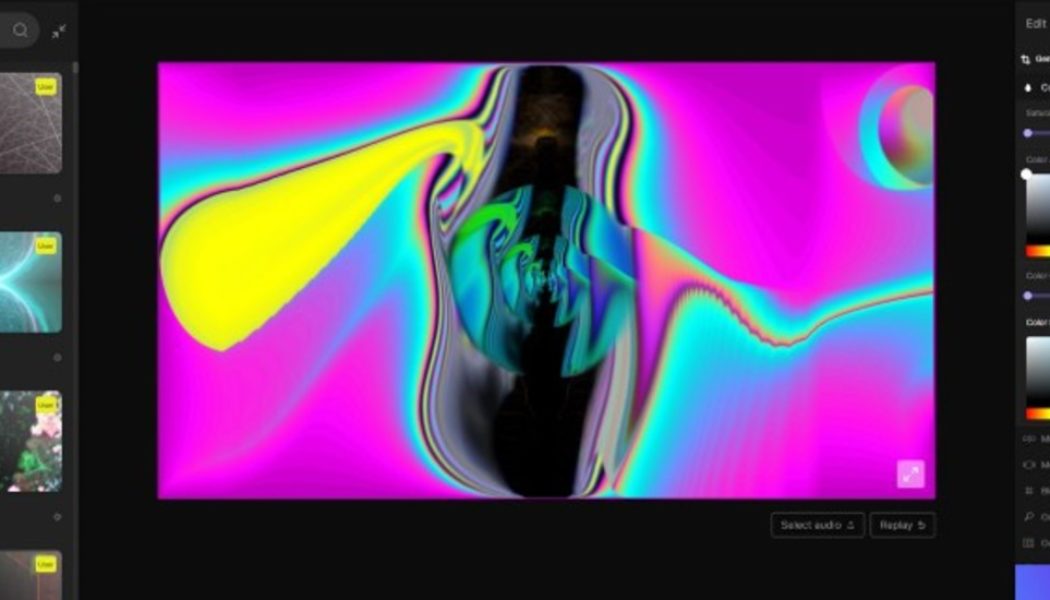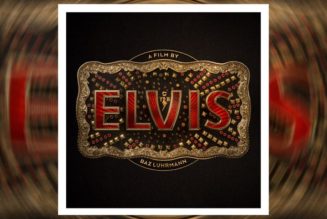We know—NFT this, metaverse that. But before you grumble at this umpteenth blockchain tech platform, consider its value for music producers.
VOID is a Web3-based platform that allows musicians to generate and customize kaleidoscopic visuals with their own songs. Created by Dutch developer Triptcip, the sequencing software essentially takes your music and spits out a trippy, beat-reactive mosaic.
VOID, which Triptcip says is the first of its kind, aims to arm music producers with an easily accessible visual synthesis tool. Visual designers have enjoyed the spoils of the digital art revolution, but many musicians have found themselves stuck in a new kind of limbo. Without a budget to join forces with a capable designer or a trusted partner au courant with the NFT climate, their barrier to entry is often too high.
But regardless of which creative lane you’re in, if you attempt to venture into the hazy mist of the NFT world, you’re a canary in a coal mine.
Digital collectible misappropriation has become a cause for concern in the convoluted Web3 epoch. The advent of NFTs has led to a dangerously abstruse Wild West of sorts, replete with fraudulent activity. Look no further than HitPiece, a controversial NFT hub lambasted by the music industry for leveraging Spotify’s API to crawl the platform’s songs and illicitly auction them without musicians’ consent.
In other words, the need for musicians to control their art’s destiny is as urgent as ever.
And therein lies the unique selling proposition of VOID. Vince Smolders, who launched Triptcip alongside co-founder Mike Vercoelen, tells EDM.com that the company will soon launch its own NFT marketplace, where VOID creators can mint their projects and sell the tokenized art to fans. Smolders envisions the upcoming marketplace as a “record shop of audiovisual NFTs.”
Just like any nascent ecosystem, Web3—and the tech it engenders—has its skeptics. Elon Musk lampooned Web3 (a blanket phrase for the network of decentralized apps on the blockchain) in a December 2021 interview as “more marketing than reality.” But after Smolders demoed VOID for us, it became clear that its visual synthesis functionality has the feel of a utility tool.
Recommended Articles
Here’s how it works. Launching the software triggers a default visual, which you can replace with a number of templates located in the dashboard’s hamburger menu icon. The menu also houses the button you’ll use to import your audio clip.
VOID then parses the audio and synchronizes it to your visual. You can then manipulate it using an expansive (and user-friendly) register of presets and their parameters, which allow you to add glitchy distortions, 3D textures and other effects. Think Instagram’s filter suite after a jolt of smelling salts.
You’re then able to add “Scenes,” the software’s terminology for the application of multiple visual templates. Smolders likens a VOID project with several Scenes to a movie, wherein you’re able to fuse a series of visual elements under the umbrella of one audial storyline.
According to a December 2021 Medium article published by Triptcip, the company has “big plans” for VOID, such as live playback for venues and hardware integration. A foray into the metaverse is also in the cards.
Smolders tells us Triptcip is launching its native NFT marketplace on the Ethereum Layer-1 blockchain in March 2022. Users will simply connect their crypto wallet, like MetaMask, to sell and purchase VOID NFTs, which double as software licenses.
“Unlike widely-circulated animal profile pic collections, we utilize NFTs as a software license in an attempt to experiment with an innovative business model that Web3 enables,” Smolders explained.
Considering today’s inflection point of NFT scams, Smolders says Triptcip will appoint a dedicated team tasked with monitoring the marketplace’s content. “If any copyright-infringed material is found it will result in removal of the content and ban of the user,” he said.
They also have plans to integrate a “social media validator” to verify its users in the same vein as the blue checkmarks found on major platforms like Instagram and Twitter. Verification will be required in order for someone to mint an NFT, according to Smolders, who pointed us to Triptcip’s Terms of Service for more information.
VOID is currently open to the public, but once the marketplace launches, its full functionality will be accessible only by Triptcip NFT holders. Take the software for a spin here.
 [flexi-common-toolbar] [flexi-form class=”flexi_form_style” title=”Submit to Flexi” name=”my_form” ajax=”true”][flexi-form-tag type=”post_title” class=”fl-input” title=”Title” value=”” required=”true”][flexi-form-tag type=”category” title=”Select category”][flexi-form-tag type=”tag” title=”Insert tag”][flexi-form-tag type=”article” class=”fl-textarea” title=”Description” ][flexi-form-tag type=”file” title=”Select file” required=”true”][flexi-form-tag type=”submit” name=”submit” value=”Submit Now”] [/flexi-form]
[flexi-common-toolbar] [flexi-form class=”flexi_form_style” title=”Submit to Flexi” name=”my_form” ajax=”true”][flexi-form-tag type=”post_title” class=”fl-input” title=”Title” value=”” required=”true”][flexi-form-tag type=”category” title=”Select category”][flexi-form-tag type=”tag” title=”Insert tag”][flexi-form-tag type=”article” class=”fl-textarea” title=”Description” ][flexi-form-tag type=”file” title=”Select file” required=”true”][flexi-form-tag type=”submit” name=”submit” value=”Submit Now”] [/flexi-form]











Tagged: Blockchain, crypto, entertainment blog, Ethereum, GEAR + TECH, music blog, Music Production, NFT, web3